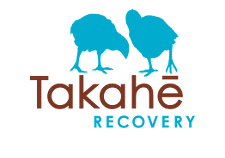Kahurangi National Park: Takahē Recovery Programme
Introduction
Kahurangi National Park became home to the first wild population of takahē outside their Murchison Mountain refuge in early 2018.
After achieving a consistent 10% growth over the past four years, coupled with the current takahē sites nearing capacity, the Takahē Recovery Programme was in a position where establishing a new wild population was both feasible and necessary.
Establishing a second wild takahē population
Early in 2018 the Takahē Recovery Programme released 30 takahē in the first wave of translocations into Kahurangi National Park, centred on the Gouland Downs area. As of November 2019, the site appears to have been successful with only one natural death recorded.
The site continues to be monitored for breeding success and survival rates but if deemed sustainable over the long term, this will be the first step in a huge conservation win for takahē.
Why Kahurangi National Park?
After a rigorous feasibility study, Gouland Downs in Kahurangi National Park was selected as the most suitable location, for the following reasons.
- There is historic presence of takahē recorded from the wider area.
- The palatable plant species, breeding habitat, topography, climate (milder than Murchison Mountains), availability of water, and low numbers of predators are all favourable to takahē persisting at this site.
- There is an extensive predator control regime in place, as part of the Air New Zealand funded Biodiversity Enhancement Project that has been operating for many years. Gouland Downs offers the best balance of suitable habitat with low predator numbers. Note: There are sites that contain better takahē habitat, but there are cats and ferrets present and inadequate predator control in place.
- The Takahē Recovery Programme estimates a carrying capacity of Gouland Downs to be 40 pairs, with the possibility of a further 20 pairs at nearby Mackay Downs. This will create a large enough population to not require intensive management and therefore be "wild".
- The site is on existing DOC tenure and offers good site access and infrastructure which will make post-release management much easier.
- The site is on the Heaphy Track, one of the Great Walks, so has the potential to provide the first opportunity for public to observe takahē in the wild.
If successful what does it mean for takahē recovery?
The primary recovery goal for the Takahē Recovery Programme is the reintroduction of takahē into South Island sites within their former range, with the hope of establishing multiple self-sustaining wild populations.
Establishing the second wild population within Kahurangi National Park has been the most significant milestone for the programme in many years and is providing valuable learnings towards a more sustainable management of takahē recovery.
Being in a position to even attempt this reintroduction is a shared success story. Without the support and commitment of our Treaty Partner Ngāi Tahu, national partner Fulton Hogan, official supplier Mitre 10, and the mainland and island sanctuaries housing takahē together with their supporter groups, the plight of takahē would have been a very different story.
While there is no guarantee that takahē will successfully establish here, things are looking very promising for this iconic species.
